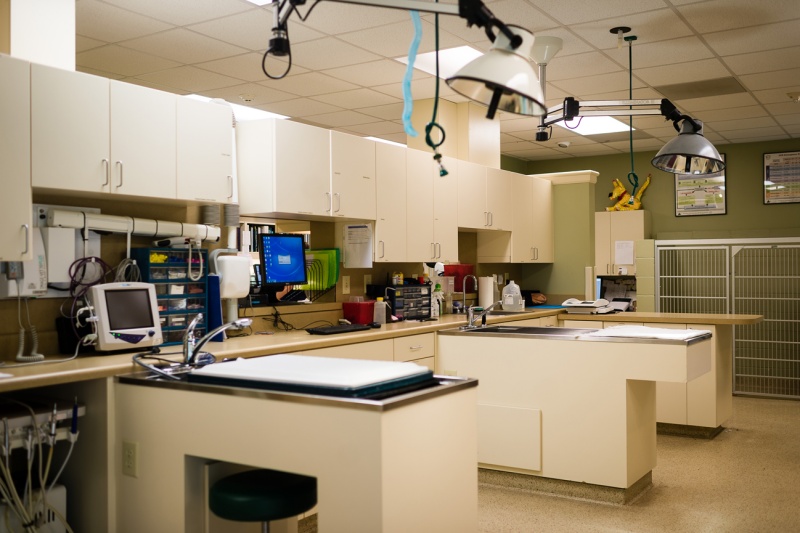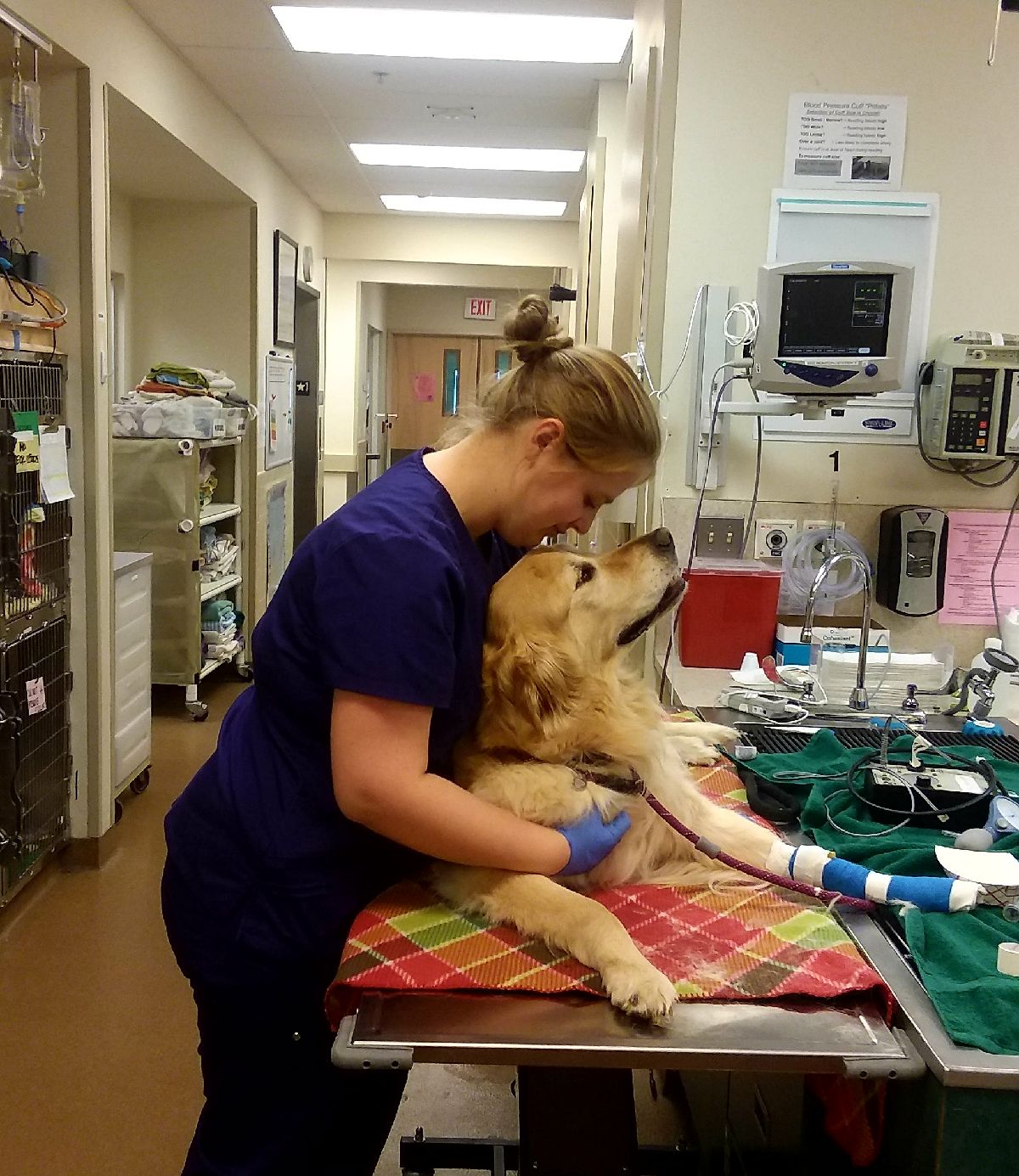Discovering the Variety Of Services Supplied in Veterinarian Emergency Situations for Your Furry Friends

Comprehending Vet Emergencies
When an animal experiences an unexpected health and wellness crisis, recognizing veterinary emergencies becomes crucial for owners. Identifying the indications of distress is important; signs and symptoms such as difficulty breathing, too much bleeding, or extended throwing up may suggest a deadly circumstance. Owners need to understand that emergency situations can occur from numerous reasons, including crashes, poisoning, or serious allergic reactions.In these moments, time is of the significance. Recognizing when to look for instant veterinary care can substantially impact the outcome for the pet. Emergency situation vet services are made to deal with important situations, offering specialized care and innovative medical interventions.Owners must also know with their animal's typical habits and health standing to far better determine emergency situations. Preserving a listing of neighborhood emergency situation facilities and ensuring accessibility to essential pet information can even more aid in swift decision-making throughout these dilemmas. Recognizing these aspects gears up proprietors to act decisively, thereby sustaining their fuzzy friends in times of requirement.
Urgent Diagnostics: Quick Assessments for Important Treatment
In emergency situations, precise and quick diagnostics are crucial for figuring out the suitable training course of action for a family pet in distress. Veterinary specialists utilize various diagnostic tools to assess the pet's condition promptly. Common approaches include health examinations, blood examinations, and imaging methods such as X-rays and ultrasounds.During these urgent evaluations, veterinarians concentrate on recognizing deadly concerns, such as internal bleeding, fractures, or organ disorder. The objective is to collect vital information in a timely fashion, making it possible for swift decisions relating to therapy options.Advanced diagnostic tools, including internal labs, can give instant results, additionally enhancing the effectiveness of the emergency situation feedback. In addition, the use of monitoring tools enables for real-time analysis of key indications, which is essential for recognizing a pet dog's total health condition. These quick diagnostics play a crucial duty in making certain that animals get the required treatment immediately, eventually enhancing their opportunities of recuperation.
Life-Saving Treatments: What to Anticipate
What can pet owners anticipate during life-saving procedures in an emergency veterinary setting? In such high-pressure situations, vet specialists prioritize speedy action to stabilize the pet's problem. At first, the group evaluates essential indications and may advise immediate treatments such as mouth-to-mouth resuscitation or providing medications to address shock or discomfort. Proprietors need to anticipate a structured atmosphere where multiple employees coordinate efforts efficiently.The vet will communicate clearly regarding the treatments being carried out, explaining the necessity of each action. Typical life-saving methods include intubation for breathing distress or fluid treatment for dehydration. Additionally, diagnostic imaging may be performed to determine underlying concerns. While pet proprietors may really feel anxious, understanding that the vet team is performing well-practiced protocols can offer peace of mind. The goal is to guarantee the pet dog receives the very best possibility of recuperation, and prompt interventions are important throughout these decisive minutes.
Specialized Treatments for Specific Conditions
Following life-saving treatments, specialized therapies may be needed to attend to specific conditions that family pets may deal with throughout emergencies. These therapies can vary significantly depending upon the nature of the problem. For example, pet dogs dealing with severe sensitive reactions might need instant administration of epinephrine, while those with breathing distress may benefit from oxygen therapy or nebulization.In instances of trauma, specialized orthopedic care might be required to attend to dislocations or cracks, often involving medical intervention or stabilization gadgets. Additionally, toxicological emergencies may require the usage of remedies or triggered charcoal to minimize further harm.For pet dogs with underlying wellness problems, targeted treatments such as insulin management for diabetic person crises or intravenous fluids for kidney failing may be important. Each specialized therapy plan is customized to the pet's specific requirements, guaranteeing the very best possible result in urgent situations. Veterinary experts use their knowledge to provide thorough treatment throughout these defining moments.
Discomfort Monitoring and Comfort Treatment
Effective pain management and comfort treatment are necessary elements of vet emergency services. Numerous pain alleviation alternatives, including medications and alternative treatments, purpose to alleviate suffering in fuzzy clients. Furthermore, comfort techniques and emotional assistance approaches play a crucial duty in enhancing their general health throughout difficult times.
Discomfort Relief Options
Several animal proprietors encounter the obstacle of handling discomfort for their furry buddies, specifically during emergencies or after surgical treatment. Vets usually use a variety of discomfort alleviation choices to guarantee the comfort of pets. Nonsteroidal anti-inflammatory medicines (NSAIDs) are frequently recommended to reduce swelling and ease pain. Opioids may be utilized for more severe pain, offering reliable relief in acute scenarios. Furthermore, adjunct therapies such as anesthetics can be carried out to target specific areas of pain. In many cases, different treatments, consisting of acupuncture or physical treatment, are discovered to enhance conventional approaches. Eventually, the choice of discomfort relief is customized to each pet's individual needs, considering their wellness status and the nature of their problem.
Convenience Methods Utilized

Along with medication, different convenience techniques are utilized to improve discomfort monitoring and total health for pet dogs in distress. Veterinarians usually make use of techniques such as gentle handling, making sure a tranquil atmosphere, and using soothing voices to assist lower anxiety. Warmth and cold therapy might be related to reduce pain and inflammation, while massage therapy methods can promote relaxation and blood circulation. Additionally, making use of soft bed linens and encouraging positioning can substantially enhance convenience levels throughout healing. Aromatherapy, using pet-safe important oils, might likewise be considered to create a comforting environment. These techniques, incorporated with appropriate clinical interventions, aim to give an alternative technique to pain monitoring, making certain pets get the treatment they need throughout important moments.
Emotional Support Methods
Emotional assistance plays a necessary role in pain monitoring and convenience care for family pets encountering clinical emergencies. Vets typically identify that a pet's emotion significantly influences their recovery. Techniques such as gentle handling, relaxing voices, and acquainted aromas can assist ease anxiety. Giving a comfortable environment is important; soft bed linen and peaceful spaces permit pets to feel secure. Furthermore, owners are motivated to continue to be present and calm, as their psychological state can straight influence their pet's temperament. Incorporating diversion methods, such as toys or treats, can also relieve tension. Ultimately, integrating physical pain monitoring with emotional support strategies improves the general wellness of pet dogs throughout difficult times, promoting a more favorable healing experience.
Aftercare and Healing Assistance for Pet Dogs
Aftercare and recuperation assistance for family pets is vital adhering to any veterinary treatment. Complying with post-operative treatment guidelines guarantees that animals recover effectively, while rehabilitation and treatment alternatives can help in regaining strength and mobility. Understanding these facets considerably adds to an animal's general recuperation procedure.

Post-Operative Care Guidelines
Ensuring appropriate post-operative treatment is critical for a pet's healing and overall well-being. After surgical treatment, a pet dog must be kept an eye on carefully for any type of Read More Here signs of problems, such as swelling, hemorrhaging, or unusual behavior. Giving a silent, comfy space for remainder is vital, as family pets require time to recuperate. It is very important to adhere to the veterinarian's guidelines relating to discomfort monitoring, medication timetables, and nutritional limitations. Keeping the surgical website completely dry and clean is important to avoid infections. Furthermore, restricting physical activity during the initial recuperation stage assists minimize anxiety on the recovery body. Regular web link check-ins with the vet can give peace of mind and warranty that the animal is healing suitably, inevitably bring about a smoother recovery process.
Recovery and Treatment Choices
While recuperation from surgical treatment is essential for pets, including rehabilitation and therapy choices can substantially boost their recovery procedure. Veterinary experts typically suggest targeted physical treatment to boost mobility and strength after an injury or treatment. Techniques such as hydrotherapy, laser therapy, and massage can reduce pain and promote circulation, assisting in faster recuperation. Furthermore, alternative treatments like acupuncture might use relief and support general health. Customized exercise strategies help animals gain back feature while protecting against additional injuries (24 hour vet near me). Behavioral therapy can resolve anxiety or stress following clinical interventions. By incorporating these recovery and treatment alternatives, animal owners can sustain their hairy friends in attaining suitable healing and preserving a higher top quality of life post-surgery
Exactly how to Plan for a Veterinary Emergency
When a pet experiences a clinical crisis, being prepared can make all the distinction in guaranteeing a quick and reliable action. Pet proprietors ought to create a specialized emergency situation kit that consists of crucial things such as a first-aid package, drugs, and a duplicate of their pet's medical records. Familiarizing oneself with the nearby emergency veterinary centers and their get in touch with details is crucial. Additionally, having a dependable transportation strategy in position can promote prompt action during a crisis.Regularly updating the emergency set and ensuring the pet's identification tags are existing also add to readiness. Proprietors need to think about taking an animal CPR and first-aid course to improve their skills in taking care of emergency situations. Ultimately, keeping an open line of communication with a key veterinarian can offer support on potential emergency situations particular to the animal's type and health problems. By taking these proactive steps, animal owners can browse emergency situations a lot more with confidence.
Often Asked Questions
Just How Can I Tell if My Pet Is Experiencing an Emergency?
Figuring out if a pet dog remains in an emergency includes observing indicators such as extreme bleeding, problem breathing, seizures, or unresponsiveness. Trigger assessment by a vet is necessary when these symptoms exist.
What Should I Bring to the Emergency Situation Vet?

Are Emergency Vet Provider Much More Pricey Than Regular Gos To?
Emergency situation veterinarian solutions typically incur higher costs contrasted to routine visits. This increase is due to the immediate nature of treatment, specific devices, and staffing required to address crucial scenarios that arise suddenly.
Exactly how Do I Discover an Emergency Vet Near Me?
To locate an emergency situation vet close by, individuals can make use of on the internet internet search engine, veterinary organization directory sites, or smartphone apps. Recommendations from local pet owners or regular veterinarians might additionally give beneficial understandings right into neighboring emergency situation solutions.
Can I Remain With My Family Pet Throughout Therapy?
The inquiry of whether a pet dog proprietor can remain with their family pet during treatment commonly relies on the vet center's plans. Several facilities enable owners to remain, while others might need them to wait outside. When an animal experiences a sudden wellness situation, comprehending veterinary emergencies comes to be essential for proprietors. Emergency situation veterinary services are created to deal with vital scenarios, supplying specialized care and sophisticated medical interventions (24 hour vet near me).Owners must additionally be familiar with their animal's normal behavior and wellness standing to far better determine emergency situations. What can pet proprietors anticipate during life-saving treatments in an emergency situation vet setup? Numerous pet dog proprietors face the obstacle of taking care of pain for their furry buddies, particularly during emergency situations or after surgical treatment. Family pet owners should produce a devoted emergency situation set that consists of vital items such as a first-aid kit, medicines, and a copy of their pet's clinical documents